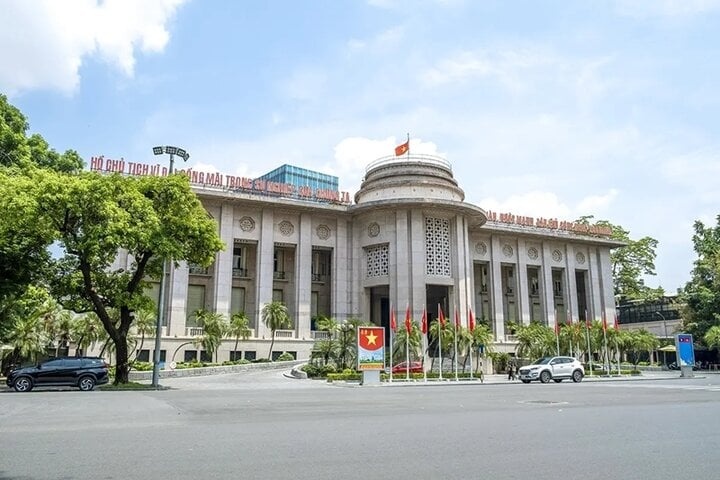State banks’ bad debts to be sold off
Plans are afoot to sell state-owned banks’ bad debts to the Debts and Assets Trading Company, now run by the Ministry of Finance.
 Turning bad to good: DATC is set to take on state-owned banks’ bad debts |
Under State Bank circular 7129/NHNN-TD, bad debts of state-owned commercial banks to be sold to the company (DATC) include non-performing loans in groups three, four and five, defined in decision No. 493/2005/QD-NHNN.
Debts of parties regulated by the Prime Minister’s decision No.149/QD-TTg as well as those which have been settled by provisions or other sources, and are currently monitored separately on off-balance sheet accounts will also be subject to the new rule.
In detail, bad debts in group three (sub-par debts), stated in decision 493, include debts that have been delayed from 90 to 180 days and rescheduled debts that are delayed up to 90 days after the restructured term.
Bad debts in group four (doubtful debts) consist of debts that are delayed from 181 to 360 days and rescheduled debts that are delayed from 90 to 180 days after the restructured term.
Meanwhile, bad debts in group five consist of debts over 360 days delayed, debts waiting for the government to settle as well as rescheduled debts that are delayed over 180 days.
State-owned banks can also sell to DATC bad debts from parties mentioned in the Prime Minister’s decision 149/QD-TTg issued on October 5, 2001, on the approval of settling bad debts in commercial banks.
The debt sale between state-owned commercial banks and the DATC will be conducted through contracts between the two parties. Prices on the debts and financial cost related to the debt sale are regulated in the Ministry of Finance’s circular No. 38/2006/TT-BTC, issued on May 10, 2006.
According to the central bank, bad debts in all of Vietnam’s state-run banks stood at 7.7 per cent of total loans in 2005.
Among them, the four largest state-run banks by assets, which account for 70 per cent of the loans in the banking system, have bad debt ratios ranging from 4 to 10 per cent.
They are the Bank for Agriculture and Rural Development (Agribank), Vietnam Bank of Foreign Trade (Vietcombank), Bank for Investment and Development of Vietnam (BIDV) and Vietnam Bank for Industry and Commerce (Incombank).
In June, central bank governor Le Duc Thuy told the National Assembly that bad debts accounted for 3.15 per cent of loans in Vietnam’s banking system last year, based on international standards.
Meanwhile, a UNDP in Vietnam economist said up to 15 per cent of Vietnamese bank loans were bad, if international accounting standards were used.
State-run banks currently hold around 75 per cent of the market share in Vietnam, but the figure will likely slide to 40-45 per cent by 2010 when Vietnam fully opens up its financial market, according to a study by Vietbid.
The local leading consulting firm was hired to give advice to the central bank to build strategies for the banking sector’s international integration. The share that joint-stock banks hold, meanwhile, will surge from 15 per cent to 30 per cent by that time and the rest will belong to wholly foreign and joint-venture players, said the study, sponsored by the Australian Government.
The capacity of banks in risk management is still inadequate and they are facing a critical stage of credit risks; meanwhile, many banks now do not observe regulation on bad debt calculation, the study said, noting that fluctuations in exchange rates, inflationary pressures and rising interest rates are also imposing risks to local banks.
No. 777/September 4-10, 2006
What the stars mean:
★ Poor ★ ★ Promising ★★★ Good ★★★★ Very good ★★★★★ Exceptional
 Tag:
Tag:
Related Contents
Latest News
More News
- The promotion of ESG via banking (November 21, 2024 | 09:32)
- Standard Chartered committed to Vietnam’s financial success (November 21, 2024 | 09:24)
- Full ESG adoption the priority for Agribank (November 21, 2024 | 09:07)
- Banks entice youth with tech advances (November 21, 2024 | 08:00)
- ESG represents a shift towards sustainability for banks (November 20, 2024 | 13:00)
- GGGI supports Vietcombank’s debut of $80 million green bonds (November 20, 2024 | 11:20)
- SHB and the ESG journey: creating social value in every step (November 19, 2024 | 15:00)
- Banking sector contributes to ESG, green growth, and sustainable development (November 19, 2024 | 14:42)
- ESG implementation in banking: from awareness to action (November 19, 2024 | 12:08)
- VIR hosts 'ESG in Banking: Leading Through Implementation' conference (November 19, 2024 | 11:14)

























 Mobile Version
Mobile Version